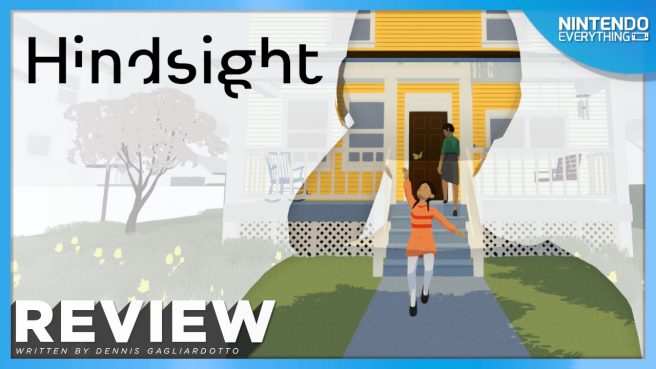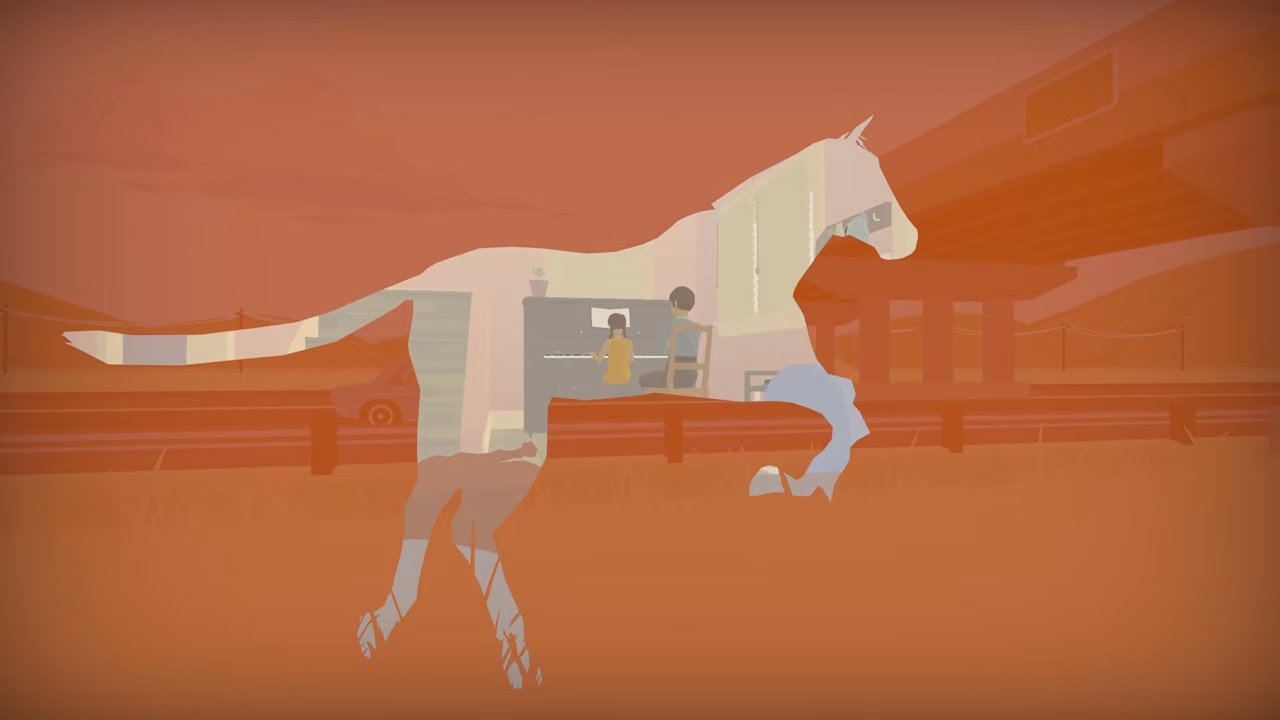[Review] Hindsight
System: Switch
Release Date: August 4, 2022
Developer: Team Hindsight
Publisher: Annapurna Interactive
A few months back, Nintendo Everything was invited to a personal discussion and presentation regarding Hindsight with developers Joel McDonald and Emma Kidwell, courtesy of Annapurna, which gave us a closer look at their new outing in wanting to provide a palpable and intimate story of life, its values, and the things we hold dear (and why). It was an insightful showcase that opened our eyes, and the eagerness to experience more of the protagonist Mary’s timeline of events only grew with each passing thought. Now after a three-hour playthrough before rolling credits on Hindsight, it’s arguably one of the most authentic, relatable, and well-established narratives on the topic in quite some time.
Hindsight wants to do more than tell a story about the ups and downs in life as it aims to be more of a lesson in valuing the chapters of our past and in our life as we write our own book with a story only we can tell and hold pride in. These stories of ours can be told in a variety of ways, but one thing that holds absolute power over a simple thought can be a photograph or an object related to a specific moment in time. This is where Hindsight begins to ask the question that drives its story and gameplay forward: what if the physical objects of everyday life, the possessions we hold close, were actual windows to the past?
In our preview, we mentioned that heirlooms, hand-me-downs, and gifts from loved ones all hold some sort of sentimental value, and these objects can transport us through time simply by the look, touch, or smell of them. Hindsight takes this feeling and turns it into a gameplay mechanic as we go through the memories and story of Mary who unfortunately gets tragic news regarding a loved one. As she returns to the home she grew up in, it becomes a casual game with a deep narrative, where players can simply rotate the camera looking for highlighted objects, zoom into them, and rotate them once more angling them correctly before the aperture expands and you’re transported into another moment in time. This is all done seamlessly, and never once is there a loading screen throughout. It was consistently impressive there could be these constant changes happening back to back with virtually no issues whatsoever.
The only issue I could notice was at the end of each chapter once Mary is brought back to her apartment with a new object, it does stutter for a moment. It’s possible that this is done because rather than being in a gameplay portion, her apartment serves as more of a hub and menu before continuing on with the rest of the game. Even after the game is completed, you’re brought back to her apartment and can replay chapters however you’d like.
Mary’s story is linear, however, so even with multiple objects to be chosen from chapter to chapter, don’t expect multiple endings or anything of the sort. The dynamics mainly come from the objects within each chapter and the dialogue spoken between and for each. Otherwise, Hindsight is a linear experience that’ll occasionally jump from child to teen to adult and back depending on what it is that’s being looked through and the significance of it in Mary’s life. The point-and-click nature of the game may not be for everyone, and I’m sure some would have preferred this as more of a walking simulator, but the team has cleverly crafted the story into a game that’s worth playing and in a format that works for it. The point-and-click nature of Hindsight makes it not only approachable to anyone and everyone whether they’ve picked up a controller before or not (it can also be played entirely with touch screen on Switch), but you’re able to focus much more on her story without the added distractions of other collectibles and exploring areas, rooms, etc. that would otherwise just be window dressing and get you sidetracked on a fluid story to be told, so I commend the team for doing what they did and in a way that’s incredibly engaging and thoughtful with Hindsight.
There’s a personal aspect to the gameplay, because while we’re going through the life of Mary via screenshots of her past, despite the linearity in place players can choose which items to interact with and revisit memories from. This freedom of selection gives the player a bit more sway into what they find interesting from Mary’s life and the memories they’d like to dive deeper into. When each chapter concludes, the objects Mary and the player has found most significant will rest next to her suitcase, and as she can’t feasibly take everything with her, the player will have to decide what they feel holds the most sentimental value and is worth taking back home. While playing, I found some objects I had a greater connection to than others, so from chapter to chapter it wasn’t particularly difficult for me to choose which one to take, but this will vary from person to person as everyone’s life experiences will be touched upon in different ways, so some objects may naturally be much more alluring than others depending on how they align with Mary’s and the story she’s told.
Telling a great story is one thing, but what Hindsight has also masterfully done is created an environment of sounds and ambiance that reel you in and – certainly by the end – tug on the heart strings a bit. The voice acting that’s been performed for Mary is tonally perfect, and the added emotions of the music, timely sound effects, and overall structure of Hindsight also makes it an audible journey alongside its narrative walk. I’m not entirely sure the game would have been as powerful or impactful as it is without the added layer of making sure the audio were to match, beat for beat, every moment happening on screen. These object shaped portals can take you anywhere and everywhere on your first playthrough of the game, but, no matter how you go about it, it feels consistent and bold.
Mary’s story of loss, reflection, and growth is one that’s immensely relatable, and just about every chapter had something I could connect with, whether it was an object of importance, a scenario I’ve similarly lived through, or simply a thought that she would convey as she would narrate the events in a biographical manner. Hindsight reminds us that while we’ll naturally have moments of happiness, sadness, anger, regret, and a multitude of other emotions, it helps us build character and defines our story. These instances, including the worst and most tragic of times, are what makes us human, and we owe it to ourselves to make sure that our time here isn’t taken for granted.
The Verdict

Hindsight feels like a deep philosophical storybook that puts you in the shoes of Mary as she goes through a snapshot of memories, discussing, contemplating, and elaborating on the moments of life that make us, break us, and define us. The game feels less like a game and more of an elaborate, interactive lecture to teach us of the things that matter and not taking things for granted that others would ultimately wish for, and doing this through a powerful anecdote that’s relatable (and in some cases inevitable) to anyone. It’s a predictably slow burn story, but its impact is a powerful one that makes Hindsight one of the strongest narratives around right now.
Hindsight copy provided by the publisher for the purposes of this review.


